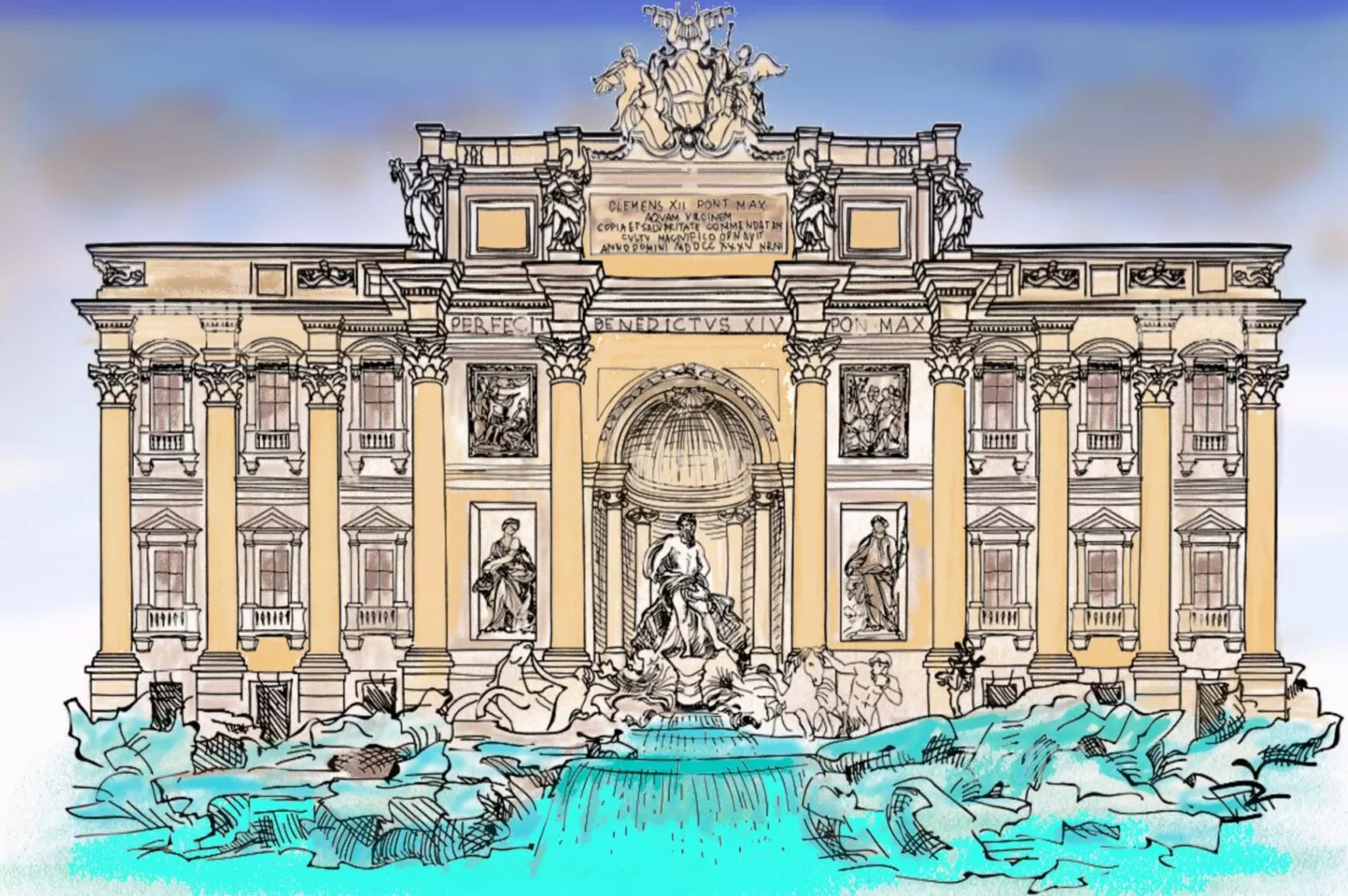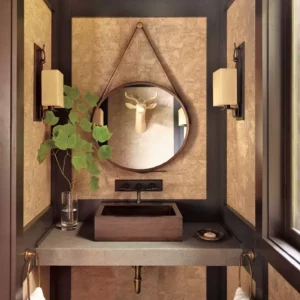Rome has more fountains than any other city in the world—over 2,000. Of those fountains, fifty are regarded as magnificent, while the other ones are smaller and serve as public drinking spots.
One of the most significant engineering feats of the ancient world, the aqueduct system, which brought water into Roman cities and towns and supplied citizens with drinking purposes as well as for bathhouses, latrines, etc., must be discussed before discussing the history of the Trevi Fountain or any of Rome’s major fountains.
The presence of clean, flowing water enabled Ancient Rome to develop at previously unheard-of rates, being the first city to reach a population of over a million people. This is what set Ancient Rome apart from any other city in human history.
Like every other city in the world, Rome depended on regional water resources such as streams, springs, underground wells, and seasonal rainwater until the building of the aqueduct system. However, as Rome expanded, the water supply not only became inadequate but also contaminated, posing health risks to the city’s inhabitants. In 326 B.C.,
the censor Appius Claudius Caucus commissioned the first of Rome’s aqueducts, the “Aqua Apia,” which supplied the city with 75,500 cubic meters of water annually.
As the need for water increased, however, the city was compelled to build eleven more aqueduct systems, all of which were finished by the year 109 AD.
The eleven aqueducts provided the city with 300 million gallons of water per day and had a combined length of nearly 800 kilometers (both above and below ground).Although the aqueduct system was among Ancient Rome’s greatest assets, it was also one of its greatest tactical vulnerabilities,
Since the water supply became a prominent target for the empire’s adversaries, who eventually managed to sack the city on August 24, 410.
Detail History:
Even though at that time the city was no longer the capital of the Western Roman Empire, its fall to King Alaric and the Visigoths was emblematic of the demise of the once-great civilization, which would cease to exist within sixty years.
After the Sack of Rome, the aqueducts that had made the city magnificent fell into disrepair or were entirely destroyed for over a millennium. In the fourteenth century, Pope Nicholas V endeavored to rehabilitate Rome and transform it into the “worthy capital of the Christian world. “One of the tasks done by the Pope was the reconstruction of the Aqua Verging to provide the city with clean drinking water.
As part of this endeavor, he intended to resurrect the ancient practice of marking the end of an aqueduct with a “Mostar” or a monumental memorial fountain.
Despite the great expense, the successors of Pope Nicholas V proceeded to restore the other aqueducts and construct magnificent show fountains at the aqueducts’ terminals over the course of many centuries. The Trevi Fountain or ‘Fontana di Trevi’ was built near the end of the Aqua Vergine and is the biggest and most magnificent of Rome’s memorial fountains.
In 1730, Pope Clement XII held a competition for the future fountain’s design. The competition was first won by a Florentine called Alessandro Galilei, but the Romans were dissatisfied that a Roman wasn’t selected.
As a result of public outrage, the contract was handed to Nicola Salvi, who started building on the fountain two years later. In 1762, Giuseppe Pannini finished the building of the 85-foot-tall and 165-foot-wide Trevi Fountain, which had taken over thirty years to complete. Salvi had died during the middle of the project, leaving Giuseppe Pannini to finish the job.
ARCHITECTURE:
According to mythology, the Roman general Agrippa sent a party of soldiers to look for a nearby water source. The troops spent a great amount of time hunting for the spring, but only a local (virgin) girl was able to point it out to them.
Thus, the young virgin became not only the namesake of “Aqua Vergine” (Aqua Virgo), but also a key design elements of the Trevi Fountain. The centerpiece of the fountain is a colossal sculpture of Neptune or “Ocean,” the deity of the sea, who sits astride a chariot formed like a conch shell and drawn by two sea horses.
One of the sea-horses seems peaceful and obedient, while the other appears restless; this is said to represent the sea’s tranquil but sometimes violent temperament.
On each side of Neptune are sculptures depicting “Abundance” (on the left) and “Sanctity” (on the right) (right). The sculpture on the left depicts Agrippa, the commander who constructed the aqueduct, while the relief on the right pays tribute to the virgin who led the army to the water source.
Above these reliefs are statues of four ladies representing the four seasons, with the coat of arms of Pope Clement XII above them and a text plaque between them that reads: “In the year of the Lord 1735, the sixth year of his pontificate, Clemens XII, Pontifex Maximus, embellished the Virgin Aqueduct and dedicated it with plenty and sanctity to the glorious worship.
“If you look attentively, you will see that the fountain is home to over thirty types of natural plants, as well as animals and marine life.
Baroque Master Piece
So what makes this fountain a baroque design masterpiece? Dynamism is the defining trait of Baroque art, which requires powerful curves and ornate embellishments to convey a feeling of motion.
Now, the most crucial aspect of the fountain to observe is its sensation of mobility. The mountain’s water flow makes it seem as if Neptune is riding his shell towards you. It gives off a 3D-like impression if you gaze at it long enough, which is a remarkable design method for the 1700s.
Not only are the sculptures brilliantly constructed, but the fountain’s feeling of motion has the ability to move almost every individual who observes it. This is why it is a masterpiece and why it has never been exceeded as a benchmark.

The fountain placed against the back wall of the Palazzo Poli is made of travertine, the same stone used to create the Colosseum, Rome’s most iconic monument.
The Palazzo Poli is now a museum of contemporary art, although its popularity pales in comparison to the city’s most iconic attraction, which is the fountain. Between 2014 and 2015, the fountain had a yearlong rehabilitation effort that included the installation of more than 100 LED lights.
The lights increased the fountain’s after-dark lighting in such a careful manner that the new technology enhanced the fountain’s architecture.
Throwing a Coin?
It is a worldwide custom to make a wish at a fountain, however at the Trevi Fountain, there is a tale that goes something like this: If you toss a single penny into the fountain, you will be blessed to come again Rome.
You will fall in love with an Italian if you toss two pennies into the fountain. If you throw three coins you will marry that man. In proportion to the number of visitors that visit the fountain, the employees is able to fish out well over a million euros year, which is then used to support a market for Rome’s underprivileged people.







